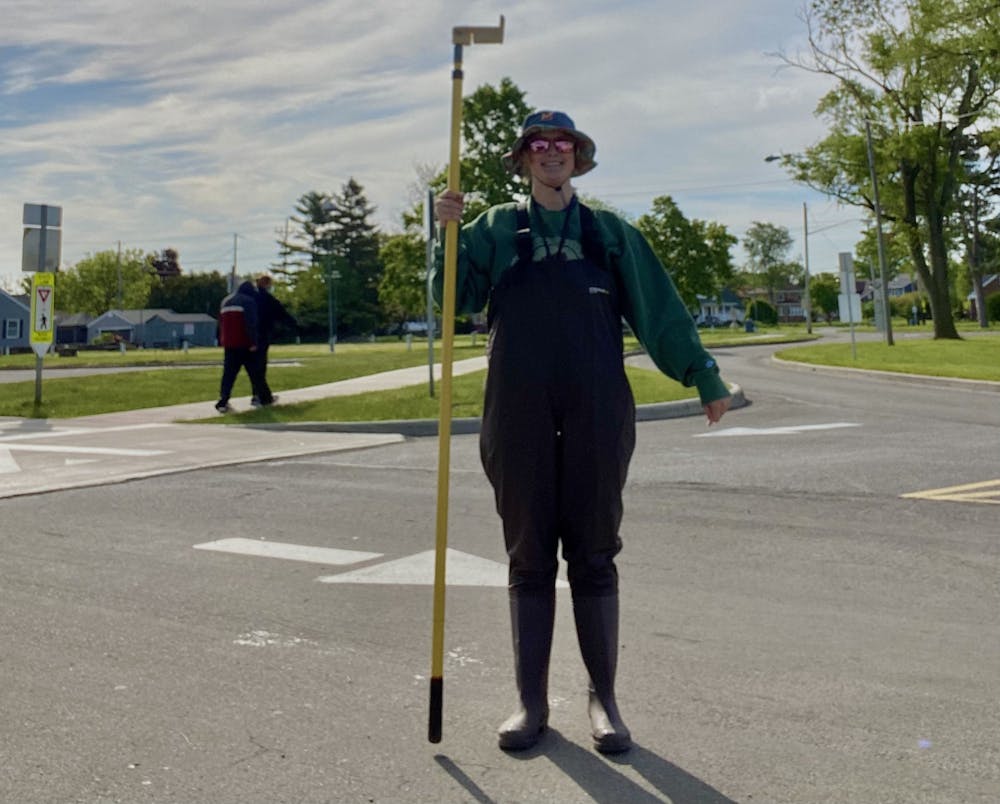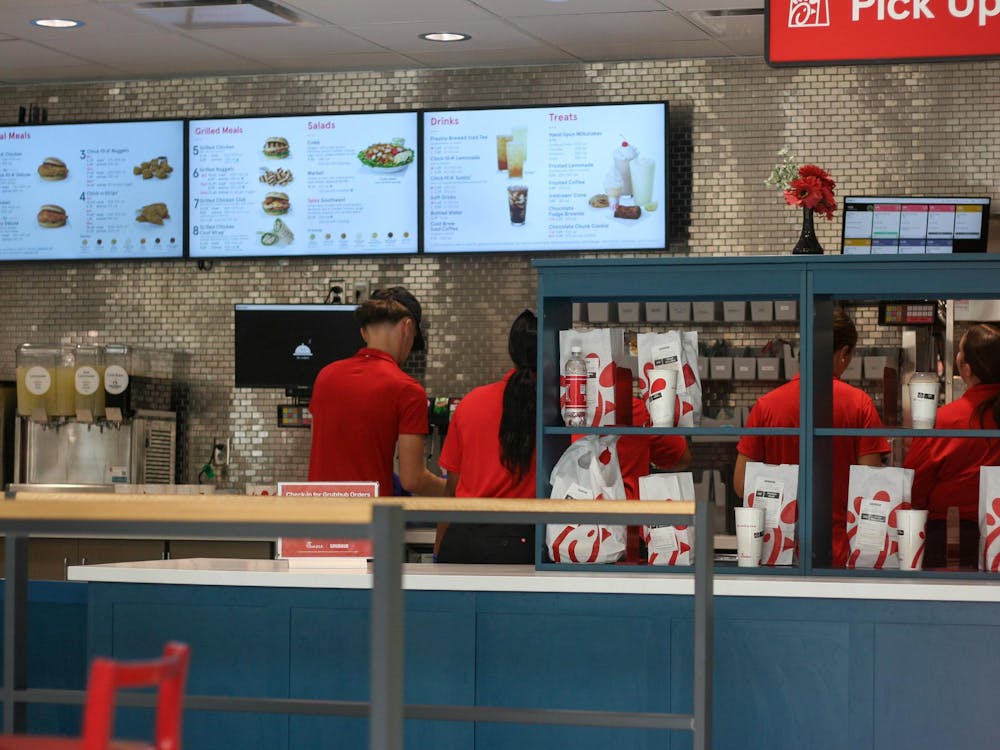The United States held its first Earth Day over 50 years ago in 1970. That same year, the Environmental Protection Agency was formed.
Miami University’s Master of Environmental Science (M.En.) program predates them both.
Miami has offered its graduate degree in environmental science since 1969, but the program hasn’t stayed stagnant. Now, students in the M.En. program can combine their master’s degree with their bachelor’s in a fast-tracked five-year program.
Lily Burbridge, a fourth-year studying environmental earth science and sustainability is pursuing her combined M.En. on track to graduate with her master’s in 2025.
“It’s just such a leg up in so many fields … and is part of the reason why I ended up going [to Miami] in the first place,” Burbridge said.
Gillian Hart, also a fourth-year studying environmental earth science on track to graduate with her M.En. in 2025, expressed similar sentiments about the combined program. She said the efforts of her professors make the program especially worthwhile.
“They work very hard in the combined program not only to further your education but also to further your professional development,” Hart said.
Hart and Burbridge both agreed the shift from their undergraduate courses to their graduate courses was not a difficult one. Burbridge said her daily schedule is similar to most undergraduates, just with a few higher-level courses thrown in the mix.
Despite being on track to earn her master's, the mix of classes means Hart does not view herself exclusively as a graduate student.
“[My classes] flow very cohesively where I’m not like, ‘Oh, I’m an undergrad right now,’ or ‘I’m a grad student right now,’” Hart said.
In addition to higher-level courses, M.En. students are required to individually complete a practicum, research or an internship and defend them. Hart and Burbridge both chose to do an internship this past summer to fulfill that requirement.
Burbridge was an environmental health intern at Lorain County Public Health up in Northeast Ohio by Lake Erie. She participated in a variety of projects in this role such as controlling mosquitos and testing water quality for E. coli.
Enjoy what you're reading?
Signup for our newsletter
Burbridge took the optional IES 665 Internship/Practicum Development course offered by the M.En. program the semester before her internship. This course helps prepare students for their individualized internship, practicum, or research with a community of supportive peers going through the same experiences.
“It really just gave me the push to go get an internship and to not take no for an answer essentially,” Burbridge said.
This past summer, Hart was an environmental health and safety intern with the chemical company Tremco.
Hart worked on a variety of projects in this internship role such as waste disposal, air quality control and air permitting to make sure that Tremco’s practices were abiding by environmental health and safety regulations. She said the M.En. program’s professional development has helped her find new opportunities.
“I think that [the combined program has] really pushed me to get out of a comfort level that I was in as solely an undergrad,” Hart said.
Beyond just an individualized defense of an internship, research or practicum, the combined M.En. students are also required to complete a three-semester-long group Professional Service Project (PSP). Hart and Burbridge are both entering their first semester of the PSP.
Amanda Bentley Brymer, the assistant director of the Institute for the Environment and Sustainability, is in charge of picking clients for the PSP.
The clients this year are the city of Fairfield, which is attempting to calculate the feasibility of converting its entire municipal fleet of vehicles into electric vehicles; Fairfield’s Public Utilities Department, which is adopting solar energy in its wastewater treatment facility; and the Silvoor Biological Sanctuary, which is managing its wildflowers in the face of invasive species and erosion.
“It’s a great opportunity for our students to learn how to work on teams, to strengthen their capacity to solve problems across disciplines, to have hands-on real-world experiences and to build their own connections with clients,” Bentley Brymer said.
The combination of classes and professional experiences aligns with the program’s emphasis on interdisciplinary approaches and goal to “prepare students, upon graduation, for immediate employment as an environmental professional,” according to the M. En. website.
Upon graduation, Hart has a very grateful outlook on what the combined M.En. program will add to her experience when looking for jobs: “You leave the program with so much under your belt that it makes you a very marketable candidate.”




